Caterpillar Animation Test
-
I recently started a new project. The full project will be a video to show a composting plant and explain how it works.
I started to fiddle with one of the most complex elements in the animation, a wheel loader which dig and carry around different flavours of garbage.
I started to model it in SketchUp to get the most accurate possible geometry for the mechanic animation.
For the front part, I mostly used simple native tools alongside FredoCorner to round off some edge here and there.
The back part was modeled by subdivisions and then converted to plain mesh and optimized to low poly.
I organized the hierarchy and the pivots in a meaningful way and exported the model to 3dsMax to animate it..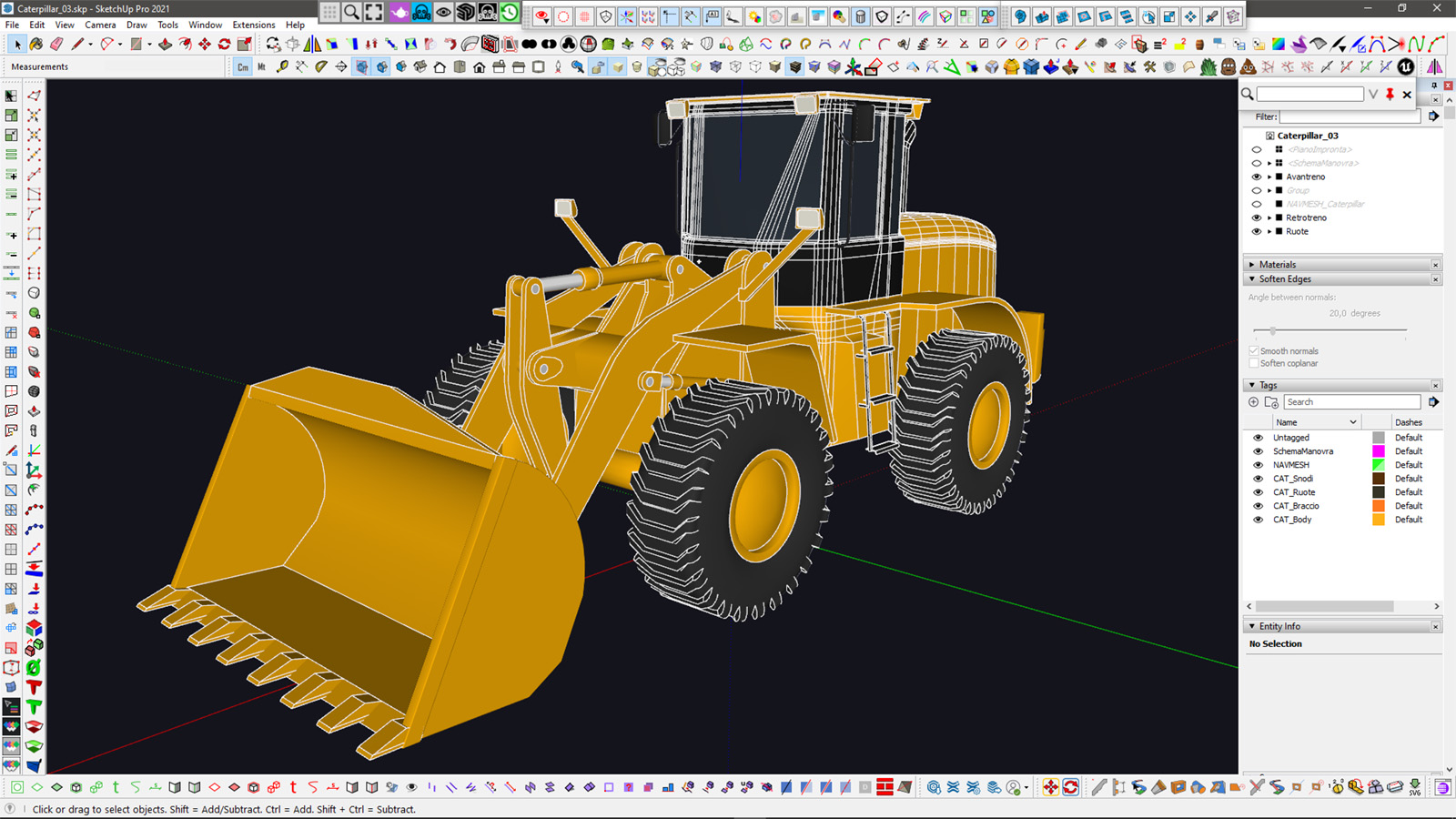
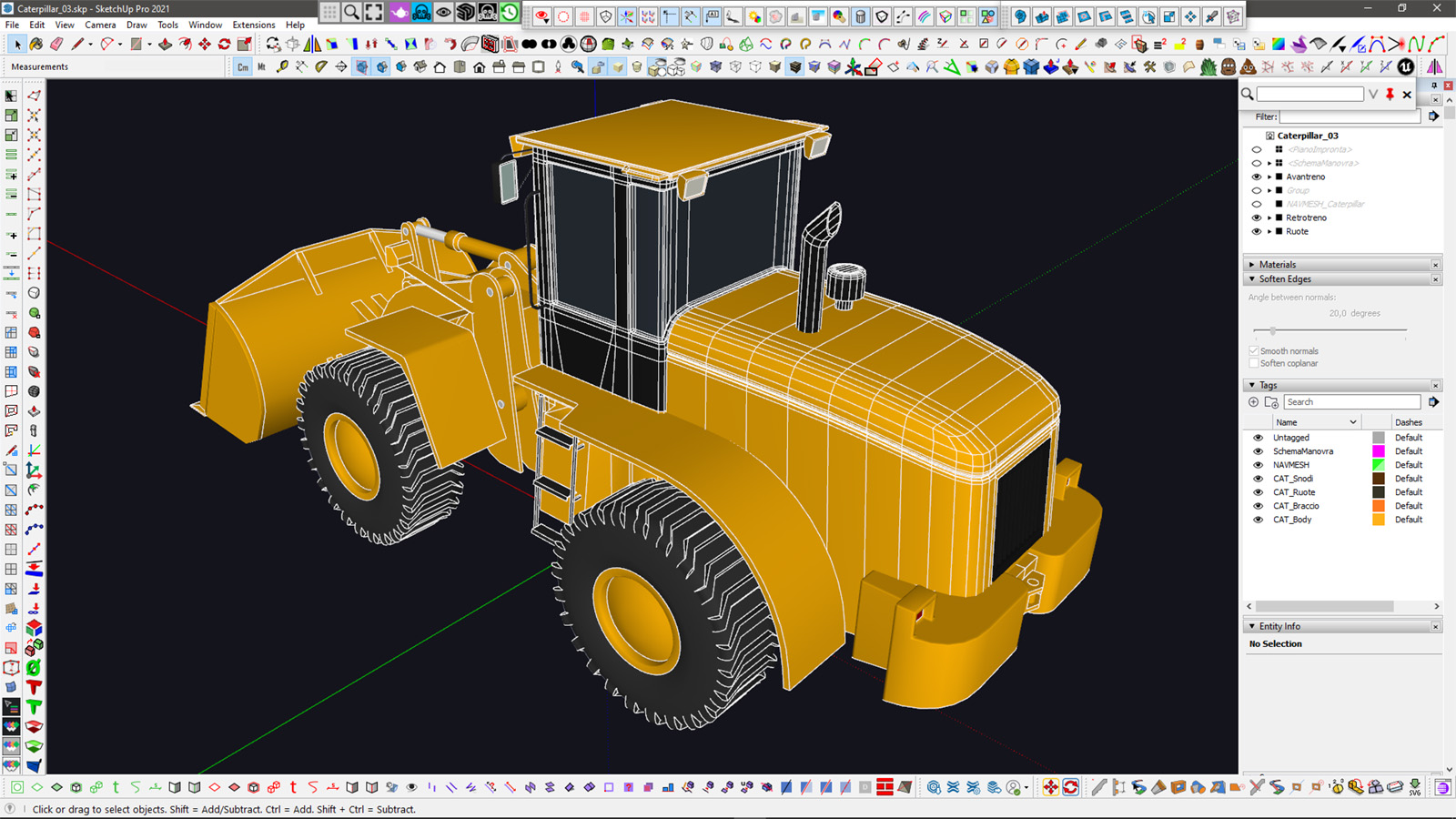
In 3dsMax I created a rigged setup.. the main rig for the bucket is based on 2 different inverse kinematics chains, one for the main arm and the other for the bucket leverage.
The pistons are simply hold togheter using some "look at" constraint, so that no matter how you move and stretch them, they constantly align themselves with each other.The whole thing is animated along a spline, which is also animated itself with a series of dummies driving the control points, allowing for multiple paths using a single spline.
Actually there is an hidden mesh which animates along the spline, with a few dummies attached and linked togheter using some more "look at" constraints to properly orient themselves when the vehicle turns left and right.
The actual vehicle parts are linked to those dummies, this was needed because the front part of this beast rotates as a whole and the overall rig behavior is more similar to a train than a "normal car" (I know this may sound a bit confusing, but.. it is what it is).The wheels and the transmission axle simply have their X rotation parameter wired to the main rig X translation parameter along the spline, so that whenever the veichle moves, everything spins nicely accordingly..
After that all this quite complex rig is set up, the whole thing can be animated keyframing only 3 main parameters: percentage along path, bucket height and bucket tilt (and of course the translation of a couple of spline control points when I need to change the path). Everything else follows accordingly.

In 3dsMax I also quickly blocked out a simple test enviroment using freeform and scatter tools to set up the trash heaps.
For the actual plant model I'll use Sketchup based on cad files coming from the real world project, but for the sake of this test, some quick and dirty playground was good enough to start with.. just to check out the main workflow.
In Max I also created a few colliders for the bucket and the front parts to try some physic simulation of the "dynamic" trash..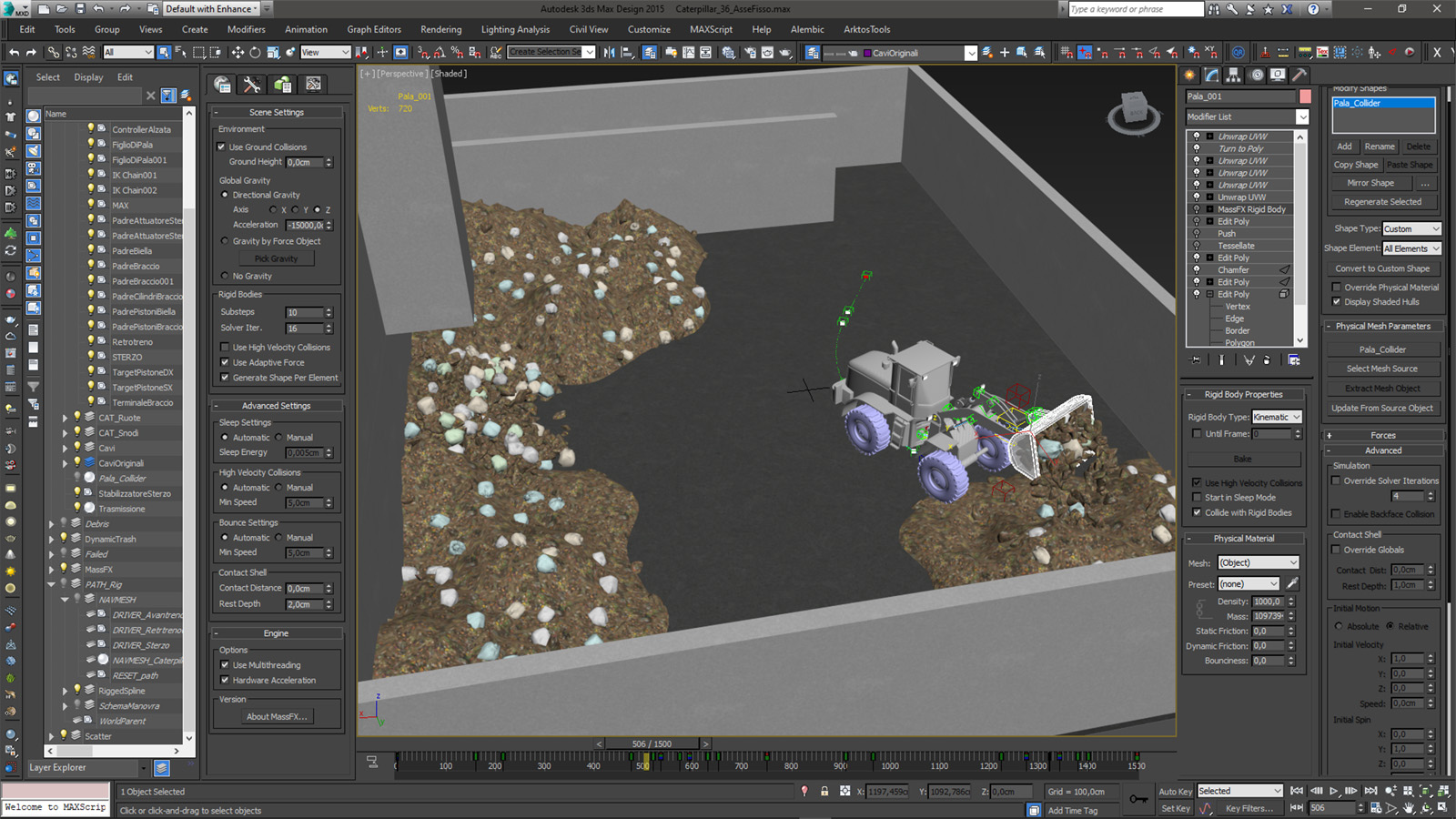
I then exported the model to Substance for texturing using a couple of UDIM tiles for the main vehicle and a simple atlas for the wheels and tires. Applyed some decals for the logos and used a few generators and particle brushes to add dirt and damages to the materials.

I then imported everything in Unity3d to render it out using the HD Render Pipeline.
I exported different models in a modular way (3 individual fbx for playground/static trash, dynamic trash and wheel loader) for better control and then assembled everything up again in Unity.
The whole lighting is based on an HDRI skybox (with a layer of volumetric clouds added) and a simple directional light for the sun.
In Unity I also added a lot of decals to improve the appearence of the static scene and animated the lights of the Caterpillar just for the sake of fun.
I also created a dozen of smart Cinemachine cameras with different "follow" and "look at" constraints and a bunch of postprocessing effects such as lens flare, bloom, vignette, chromatic aberration and so on..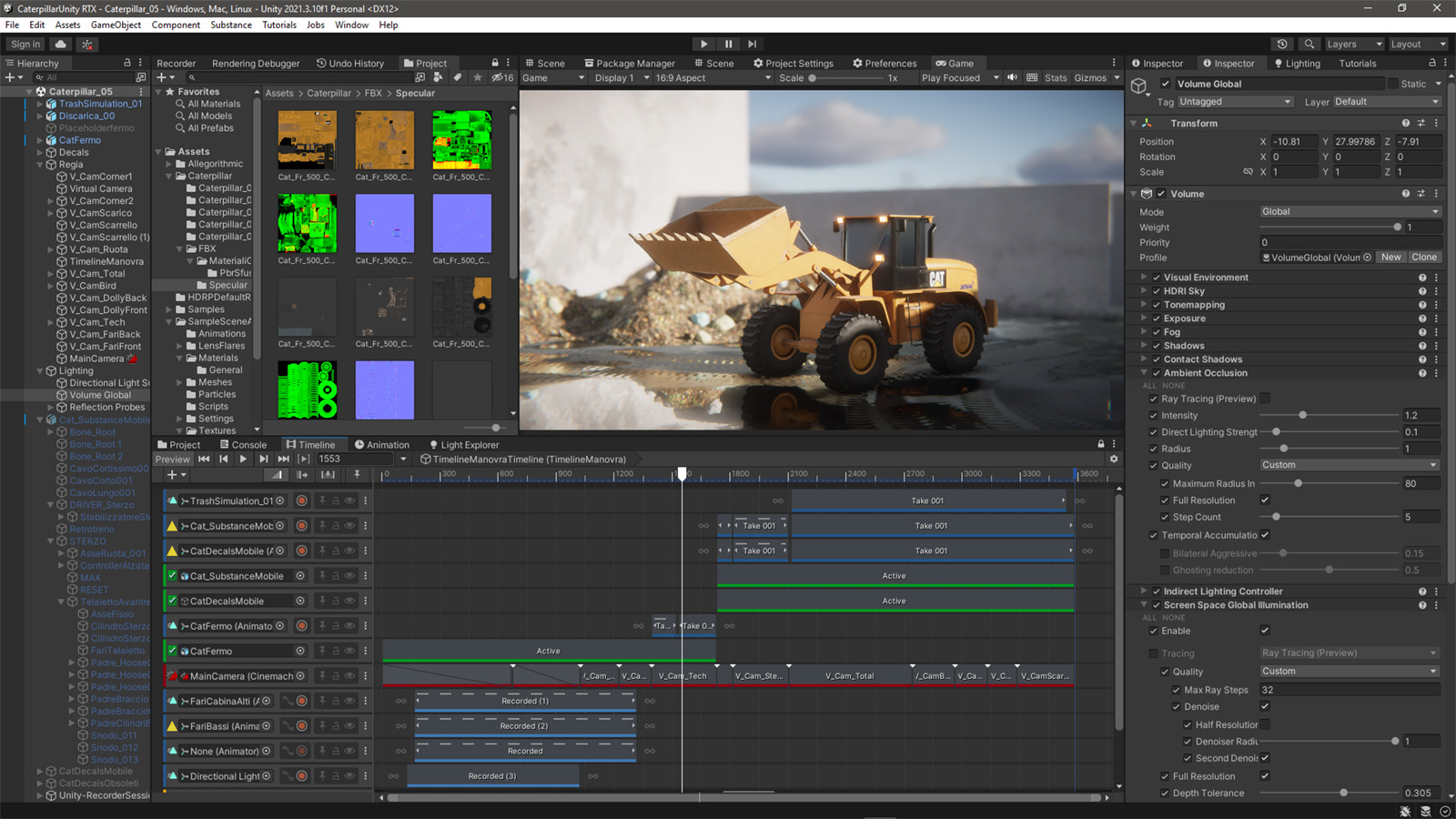
I recorded the whole sequence and sent it to Davinci Resolve for final postproduction.
I added some cuts to finetune the overall flow and cleanup some imperfection, added the music and the end titles, a couple of simple transitions, but most of all, I did a bit of color correction and color grading to balance the overall lighting and add a little more of "early morning mood" to the scene.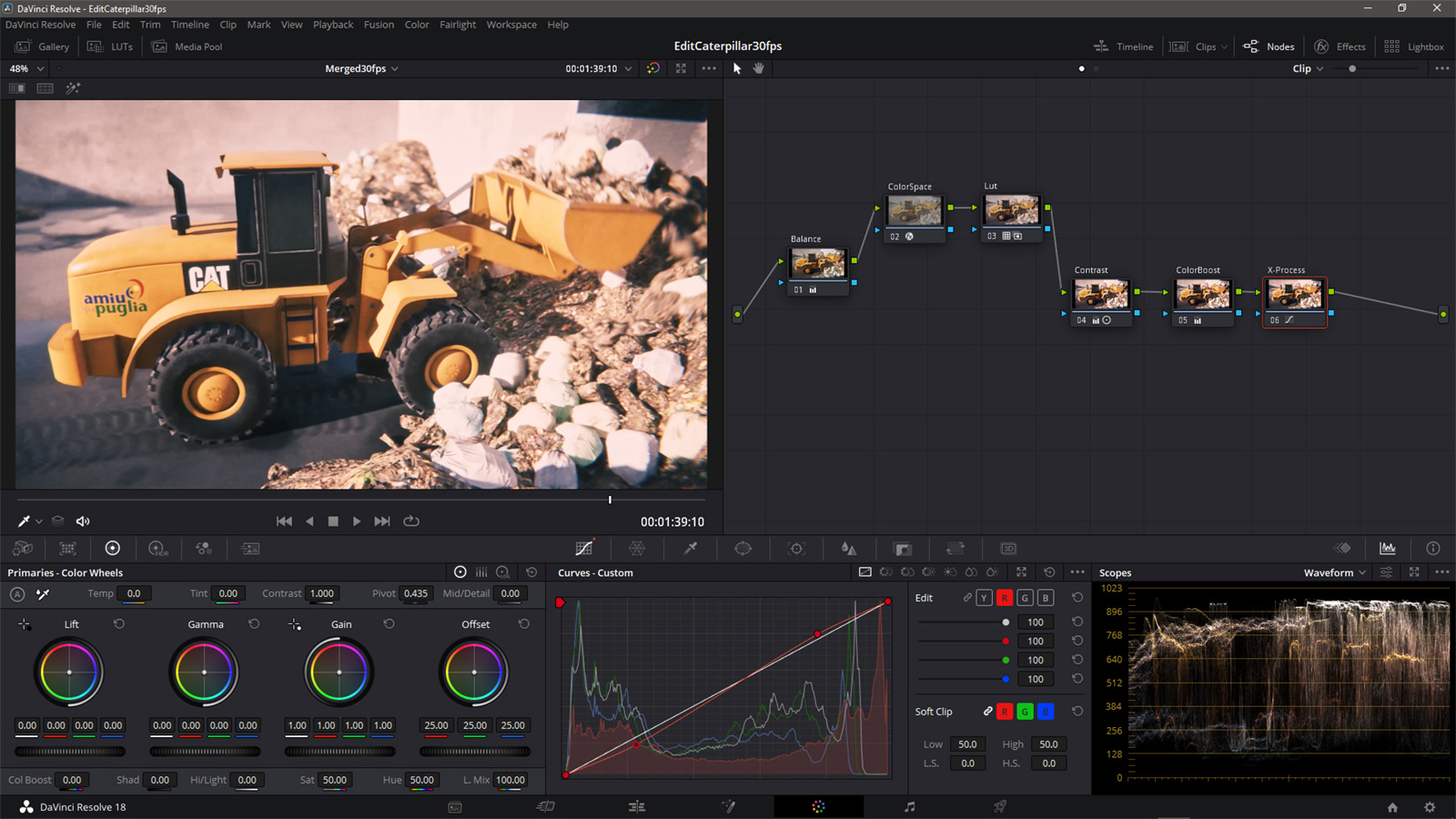
Here's the finished test sequence.. I hope you enjoy it.

-
Such cool work! Bravo, sir!
-
...Boahhh! Hervorragend !!!

-
Very nice!
-
Wonderful. Color grading makes it pop! Is it a LUT?
I love the mounted camera showing the hinge operation. The DOF really did lead the eye in.
Well done Sir. Only you know they amount of work and patience that took. Take the rest of the summer off

-
Excellent work! In particular, the scooping and dumping processes look VERY realistic. Your description of the process certainly helps us understand how complicated things can get to results of this quality,



How did you animate the stuff you scooped?
-
@rich o brien said:
Wonderful. Color grading makes it pop! Is it a LUT?
Thank you! Yep there's a LUT applied amongst other fx.
Basically I worked on the colors in 2 steps.. the first step was done on the single clips to balance a bit the exposure, shadows and hilights and have them a tad more consistent between each other.
In the second step (the one in the screenshot) I created a nested timeline to grade all the balanced clips at once, converted the color space to Cineon Film Log (to make the Davinci inbuilt LUTs work properly) and then applied a DCI-P3 Kodak 2383 D55 LUT.
The other two nodes before and after are to slighty balance it and bring in a bit more of contrast and detail.
The last node is for Cross processing.. used the red channel curve to slightly bring down the red in the dark and slightly up in the light (to get a bit of greenish tint to the shadows and a bit of warm in the hilights).@rich o brien said:
I love the mounted camera showing the hinge operation. The DOF really did lead the eye in.
Actually there's quite a bit of action goin'on in the hinge zone, there are the steering pistons pushing and pulling, the cable flexing and twisting a little, the transmission rod rotating..
I initially didn't plan to animate all of that, but looking at the animation you could clearly see that something was quite off (at least my OCD noticed it, so I fixed all of that).. but is the typical kind of stuff that you tend to spot only when it's off, when is working properly you can barely see that.. you know..
So after all that hard work I decided to set up a dedicated camera to make that at least slightly noticeable LOL.@rich o brien said:
Take the rest of the summer off
Actually I fear that I'll spend nearly the whole summer fighting with this stuff, because the deadline for the complete video will be around september/october..
But it's all good, will be fun to do this, lot of action going on, different vehicles and machinery and also particle systems, gas flowing into pipes and more fun stuff
-
@ntxdave said:
How did you animate the stuff you scooped?
I used the physics and collision engine inbuilt in 3dsMax which is called "Mass FX" (actually developed from Nvidia).
I could have done pretty similar stuff straight in Unity if it was meant to be interactive, but for plain animation, doing that in 3dsMax allows to bake the animation to keyframe when you are happy with the simulation, so that is way more consistent and lighweight compared to have the simulation running at runtime every single time you hit the play button.
Basically it works in this way:_ you set up the colliders, there are 3 main categoryes which are static (quite self explainatory), kinematics (the ones which have an arbitrary animation, in this specific case, those are the bucket and the arm), and dynamics (the ones wich are not animated by themselves but reacts to gravity and collision with other dynamic and kinematics objects, in this case the trash objects)
_ you set up all the additional simulation parameters such as gravity (also some wind if you want), density/mass of the objects, friction, bounciness and so on
_ you hit the simulate button and go grab a beer
_ you come back with your beer, change some parameters, hit the simulated button again and go grab some other beer
_ repeat the previous step the required number of iteration to make the simulation work properly
_ when you are completely high, the beer is finished and the simulation is working properly (or at least you think so) you can finally hit the bake button and make it into a persistent animation that you can safely playback and export.
-
Well done!

-
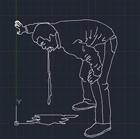 P panixia referenced this topic on
P panixia referenced this topic on
Advertisement







